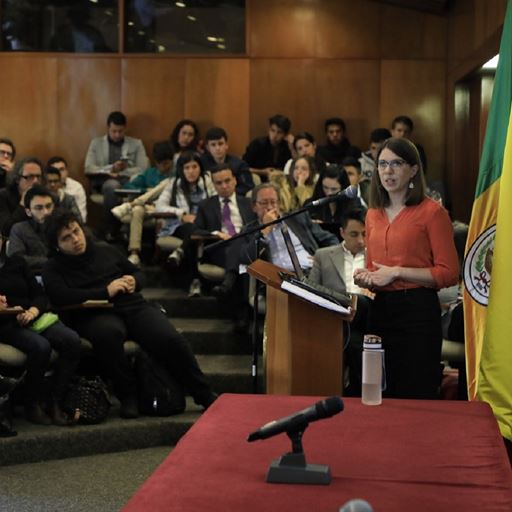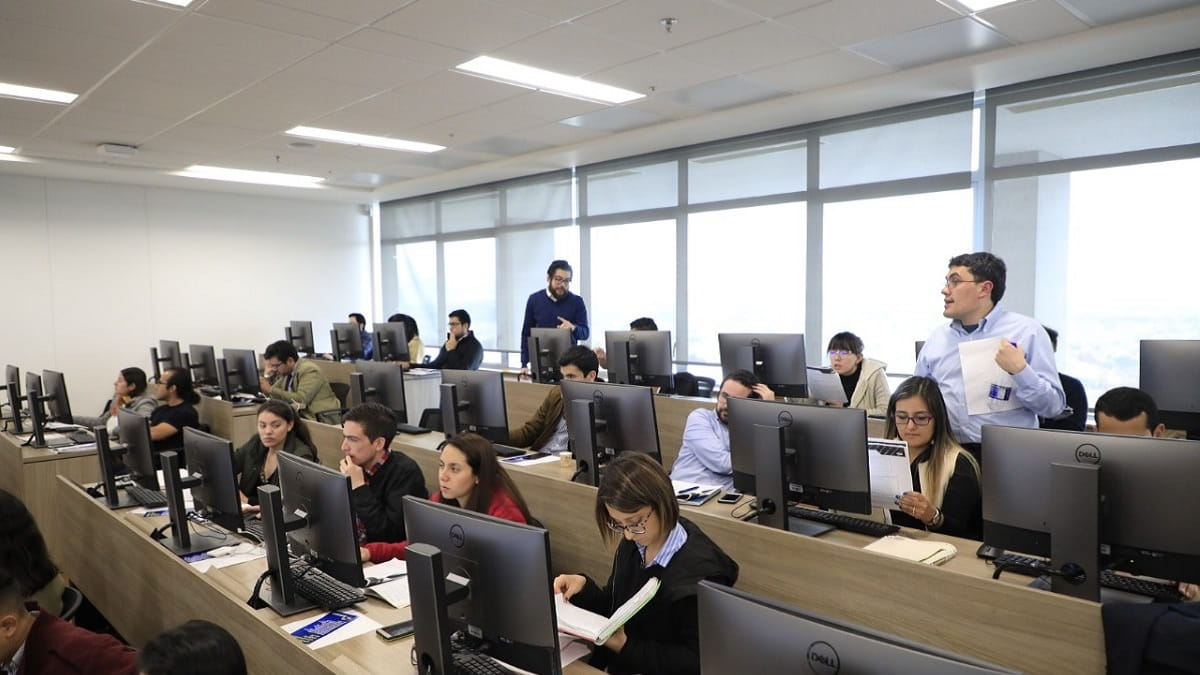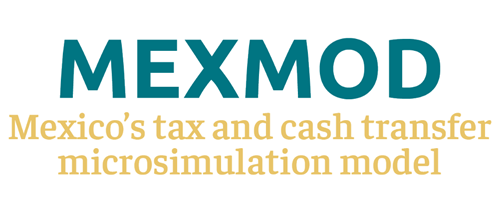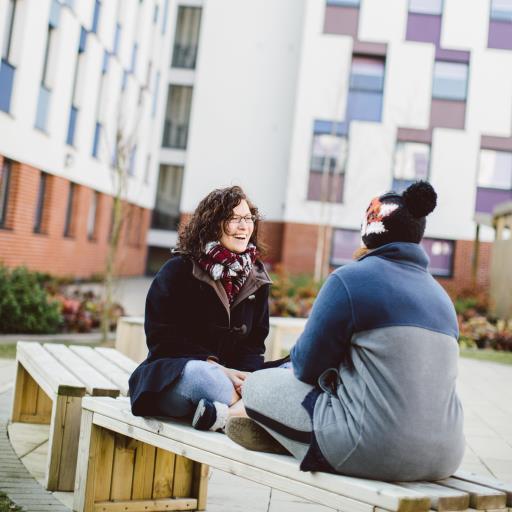Simulating tax-benefit policies to alleviate poverty and reduce inequality in Mexico and Colombia

GCRF@Essex interview – Dr Holguer Xavier Jara Tamayo
Partner organisations: Centro de Investigación en Alimentación y Desarrollo, A.C.(CIAD); Universidad Externado de Colombia
1. What is your research about?
Extreme inequality has been highlighted as one of the most important challenges affecting the economy and society in Latin America, and particularly in Colombia and Mexico. At the same time, the tax and benefit system in both countries has a very limited redistributive role, which points to the need of implementing reforms aimed at reducing poverty and inequality. Unlike in developed countries, researchers and policy makers in Latin America lack analytical tools to assess the ex-ante effect of policy reforms on the income distribution. The aim of our research was to develop open access tax-benefit microsimulation models for Mexico and Colombia for the evaluation of policy reforms aimed at reducing poverty and inequality. Thereby, we address the Human Rights, Good Governance and Social Justice challenge area of the GCRF.
2. What activities did your GCRF@Essex funding support?
The funding for projects in Colombia and Mexico supported four main activities:
1. Developing two tax-benefit microsimulation models: COLMOD for Colombia and MEXMOD for Mexico, allowing the partner institutions to make the models and their detailed documentation available free of charge to researchers worldwide. Access to COLMOD; and access to MEXMOD can be requested online. Both models are implemented in the EUROMOD platform housed at the University of Essex, allowing any res.earcher using EUROMOD to study the distributional effect of taxes and benefits in these countries.
2. Capacity building. The project consisted of a close interaction with Colombian researchers at Universidad Externado de Colombia and Mexican researchers at CIAD to build up expertise in the development and use of tax-benefit microsimulation for policy analysis. Researchers from Externado attended a EUROMOD training course as part of a research visit to ISER. They also delivered training to researchers in Colombia supported by the Essex team as part of the project. Unfortunately, due to the COVID-19 outbreak, research visits planned for researchers from CIAD were cancelled but regular online meetings were organised to ensure a close collaboration. Researchers at CIAD aim to organise a training course in the future to create a larger network of model users and experts in microsimulation.
3. Development of policy briefs. The newly developed models were used to analyse the distributional effects of tax-benefit policies in Colombia, and to assess the effects of the COVID-19 pandemic on income poverty and inequality in Mexico. The latter is available on the model webpage.
4. Organisation of academic conferences about the use of tax-benefit microsimulation for policy analysis. An academic event took place in Bogotá, Colombia, on 23rd April 2019, where a panel of national and international experts, including researchers from the Institute for Economic and Social Research (ISER), discussed the design of tax-benefit policies and inequality in Colombia. An online conference will take place on 11th February 2021 as part of the project in Mexico. The event will include a session to launch MEXMOD, a session to present the results of the policy brief and virtual presentations on the use of microsimulation for policy analysis by academic experts, including two ISER researchers.

3. You have focused on advancing social justice in Mexico and Colombia through the design of open access tax-benefit microsimulation models and ex-ante evaluation of social policies. How are your projects benefitting Mexico and Colombia and which Sustainable Development Goals (SDGs) are being addressed?
Researchers, policy makers and third sector organisations in Mexico and Colombia often lack analytical tools to assess the impact of reforms to taxes and cash transfers on poverty and inequality. Our projects benefitted the two countries by democratising the use of tax-benefit models to enable evidence-based policy discussions at a broader level. An important component of the project involved building capacity on the use of the microsimulation models. In Colombia, a training course on the use of microsimulation enabled us to reach a wide audience of researchers and policy makers, and the model has been used in several projects, including work in collaboration with the Inter-American Development Bank. The model for Colombia has been requested by 50 researchers and students since 2019 from countries such as Colombia, Brazil, France, the US or the UK. In Mexico, researchers at CIAD have become experts in the use of the microsimulation platform and aim to organise a training course in the future to create a larger network of model users and experts in microsimulation. The development and use of tax-benefit models in Mexico and Colombia allow addressing Sustainable Development Goal 1 (i.e. end poverty in all its forms everywhere) and SDG 10 (i.e. reduce inequalities within and among countries).
4. You are closely collaborating with colleagues in both Colombia and Mexico. How did you find your collaborators?
The collaboration with Universidad Externado in Colombia was possible thanks to the work of David Rodriguez, a Colombian PhD student at ISER, who is affiliated to Externado de Colombia University. David developed the tax-benefit model for Colombia as part of his PhD and the GCRF@Essex project allowed institutionalising the model as part of Externado and making it publicly available. In the case of Mexico, we had been in contact with the team at CIAD as part of a previous initiative to build a tax-benefit model for Mexico. The GCRF@Essex project allowed to set up a formal collaboration and materialise the development of an open access tax-benefit model for Mexico.
5. Are there any challenges when pursuing this international and collaborative project?
Finding the time to interact throughout the duration of the project is a big challenge, especially because academics in developing countries, such as Mexico and Colombia, have heavy teaching duties which leaves limited time for research. Our collaboration with Mexican researchers was particularly affected by the COVID-19 outbreak and we had to cancel the visits of our Mexican partners to ISER. The visits were intended to provide in depth training on the development and use of tax-benefit microsimulation models over a short period of time and to allow interaction between our partners and researchers at ISER.
6. What tips would you give to other people applying for Global Challenge Research Funding?
Essex has a long tradition producing high quality quantitative social science research. Many of the methods we use, could be extended, and adapted to the reality of developing countries. A tip to academics working on quantitative social science research is to look at data sources in developing countries which would offer the possibility of applying the methods used at Essex to analyse the situation of these countries.
7. How do your GCRF@Essex funded projects support your wider research plans?
Over the past years, I have been working in collaboration with different institutions such as UNU-WIDER, the Inter-American Development Bank, and local teams of researchers in Latin American countries to develop and use tax-benefit microsimulation models for research and policy analysis. The models, built in the EUROMOD platform, enable academics and policy makers to do comparative research. Funding by the GCRF@Essex has been essential to institutionalise two of these models and ensure that these tools are used by the wider research community. My broader research agenda aims to allow researchers in Latin America to use these type of tools to assess the effect of tax-benefit policies on poverty and inequality and to learn about each country’s experience to design instruments to increase fiscal capacity and social protection in the region. We have been recently awarded a new GCRF@Essex project to assess the distributional impact of COVID-19 in Ecuador, Colombia and Peru. Therefore, GCRF@Essex projects represent a great opportunity to make use of these models to address topics which are of great relevance for governments in the region.
![Portrait of Dr Holguer Xavier Jara Tamayo]() "Our projects benefit countries in Latin America by democratising the use of tax-benefit models to enable evidence-based policy discussions at a broader level."
"Our projects benefit countries in Latin America by democratising the use of tax-benefit models to enable evidence-based policy discussions at a broader level."
![David Rodriguez delivering a lecture 330x500]() "The microsimulation models for Mexico and Colombia are allowing us to quantitatively study how benefits could be improved and the ways to finance them, specifically, taking into account the additional difficulties arising from the COVID-19 pandemic."
"The microsimulation models for Mexico and Colombia are allowing us to quantitatively study how benefits could be improved and the ways to finance them, specifically, taking into account the additional difficulties arising from the COVID-19 pandemic."

)
)


